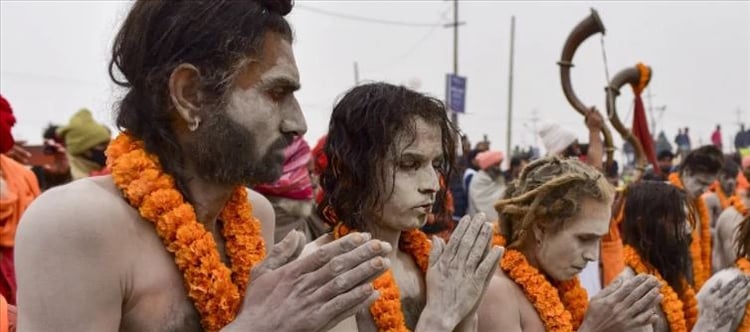
To honor this departure, they prepare and eat a community feast of Kadhi-Pakora, which represents their oneness and disciplined way of life. A centuries-old custom, the lowering of the sacred flag marks the end of their visit. Although many people see the spectacular display of their entrance at the Kumbh, their departure is what best shows their steadfast dedication to a life beyond this world.
The maha Kumbh: A Convergence of Faith
The greatest religious event in the world, the maha Kumbh, takes place in Prayagraj's revered Sangam, which is the meeting point of the Ganga, Yamuna, and the ethereal Saraswati. Over 50 crore devotees have attended the 2025 edition, which ran from january 13 to february 26. It is anticipated that this figure will surpass 60 crore. The naga Sadhus command a notable presence among the pilgrims who come from all walks of life to purify their souls in the sacred waters. They symbolize an old spiritual heritage and are emblems of renunciation because of their ash-smeared bodies, flowing dreadlocks, and total disengagement from material belongings.
A Gruelling Path To Asceticism
Choosing to become a naga Sadhu is a lifelong commitment that requires a great deal of discipline. In the Akharas (monastic orders), those who choose this route go through a 12-year initiation process that involves strict penance, celibacy, and disengagement from all social and familial connections. They undergo symbolic death rites as part of their initiation, which represents the rejection of their former selves. They lead a simple, meditative, and devotional life to Lord Shiva, the ultimate ascetic.
From Prayagraj To Kashi: The Next Spiritual Destination
After the maha Kumbh, many naga Sadhus go into solitude, but this year, seven of the thirteen Akharas have decided to make a fresh pilgrimage to Kashi (Varanasi). be people get ready for maha shivratri on february 26th, the city—often referred to be Shiva's abode—becomes their home. Religious processions and the fascinating holi of the Graveyard rite, which serves as a sobering reminder of life's fleeting nature, will be features of their stay in Kashi. The cycle of death and rebirth is symbolized by the joyful smearing of cremation ground ash during this festivity.




 click and follow Indiaherald WhatsApp channel
click and follow Indiaherald WhatsApp channel